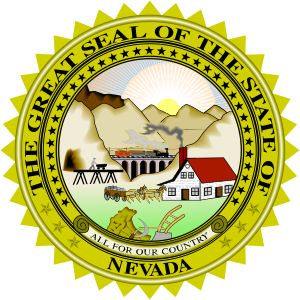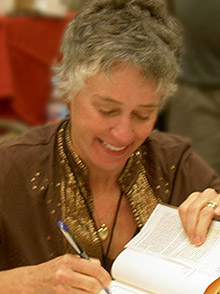Discover Your Roots
SIGN UPDiscover Your Roots
SIGN UPThe name Nevada is of Spanish origin and is primarily gender-neutral. It means "Covered In Snow." The state of Nevada, known for its desert and semi-arid climate, takes its name from the Spanish adjective "nevada," which translates to "snow-covered" or "snowy." The name refers to the small overlap of the state with the Sierra Nevada mountain range, despite the majority of the state being desert and semi-arid. The history of Nevada is closely tied to its mining industry, with the discovery of silver at the Comstock Lode in 1859 leading to a population boom and the state's admission to the Union during the Civil War. Today, Nevada's economy is driven by tourism, mining, and cattle ranching, with Las Vegas being a major tourist destination.

The Nevada Senate is the upper chamber of the Nevada Legislature, consisting of 21 members from single-member districts. Each senator represents approximately 128,598 individuals. State senators serve staggered four-year terms, and term limits restrict senators to three 4-year terms. The Senate met at the Nevada State Capitol in Carson City until 1971 when a separate Legislative Building was constructed. The Nevada Territorial Legislature held its first session in 1861, with the Council as the precursor to the current Senate. The Senate's size has ranged from 15 to 25 members throughout its history. In 1919, the Senate implemented "Little Federalism," setting the membership at 17 until 1965–1967. The modern era began in 1967 after judicial intervention and the adoption of a new apportionment law, resulting in a 40-member Assembly and 20-member Senate. The size of the Senate was increased to 21 in 1981 due to population growth in Clark County. In 2008, Democrats gained control of the Nevada Senate for the first time since 1991. Notable resignations and appointments have occurred, shaping the Senate's composition and dynamics.

The Nevada Assembly is the lower house of the Nevada Legislature, consisting of 42 members elected to two-year terms from single-member districts. Term limits restrict assembly members to six 2-year terms. The Assembly meets at the Nevada State Capitol in Carson City and convenes every odd-numbered year, with a maximum of 120 days to complete legislative business. The Speaker of the Assembly presides over the chamber, controlling the flow of legislation and committee assignments. The Assembly chamber is mainly red, with a large gavel above the Speaker's desk, engraved with the name of the longest-serving Speaker, Joe Dini. The Assembly also holds joint-meetings and sessions, including the State of the State Address and addresses from Nevada's federal delegation. The Speaker and other Assembly leaders are elected by their respective party caucuses. Overall, the Nevada Assembly plays a vital role in the legislative process, representing the diverse interests of the state's population.

Nevada Barr is an American author known for her Anna Pigeon series, set in various national parks and protected areas of the United States. Born in Yerington, Nevada, Barr was named after a character in one of her father's favorite books, despite being born in Nevada. She grew up in Johnstonville, California, where her parents ran a small airport. Barr pursued her education at California Polytechnic State University, San Luis Obispo, and the University of California, Irvine, earning degrees in speech, drama, and acting.Barr's artistic career began as a professional actor, and she transitioned to writing while living in New York City and Minneapolis. She later worked as a park ranger in Mississippi, which inspired her to create the character of Anna Pigeon. Her first mystery novel, "Track of the Cat," featuring Pigeon, was published in 1993, marking the beginning of a successful series. Barr's books often explore murders linked to natural resource issues within national parks.Aside from her writing, Barr has also pursued painting and currently resides in Oregon. Her personal life has seen her involved in multiple marriages and relocations, including a period in New Orleans. With a prolific bibliography, Barr's Anna Pigeon series has captivated readers with its unique blend of mystery and the natural beauty of America's national parks.

The Nevada Gaming Commission is a Nevada state governmental agency responsible for regulating casinos throughout the state. Established in 1959 by the Gaming Control Act, the Commission consists of five members appointed by the governor, with one member serving as Chair. Their primary duties include making decisions on licensing matters and ruling on work permit appeal cases. The Commission holds the final authority on licensing, with the power to approve, restrict, deny, revoke, or suspend any gaming license. They are also responsible for adopting regulations to enforce state laws governing gaming. Notable in popular culture, the Commission was featured in films such as "Casino" and "Ocean's Eleven." The Commission's chair has been held by prominent figures, including Harry Reid. For those interested in the history of gaming regulation and its impact on popular culture, the Nevada Gaming Commission remains an influential entity in the casino industry.

Nevada Capitol Police is a law enforcement division under the Nevada Department of Public Safety, responsible for maintaining security in major state buildings and safeguarding senior government officials. Established in the late 1940s as the security detail of the Nevada Division of Buildings and Grounds, it initially comprised one night watchman patrolling the Nevada State Capitol Complex. Over the years, the department evolved, and in 1985, its officers were recognized as official sworn peace officers, on par with other law enforcement agencies in the state. Since then, the Nevada Capitol Police has had eight Chiefs, with Jerome Tushbant currently serving in this role since March 2013. The department has not been without controversy, as evidenced by a lawsuit settlement in 2014 regarding alleged discrimination. Despite this, the Nevada Capitol Police continues to play a crucial role in maintaining security and law enforcement within the state's government buildings. For more information, visit the official Nevada Capitol Police website.
All images displayed on this page are sourced from Wikipedia or Wikimedia Commons.We use these images under their respective Creative Commons or public domain licenses. Wherever applicable, author attributions and license information are provided. If you believe an image is used incorrectly or outside its license terms, please contact us so that we can review and correct the issue.